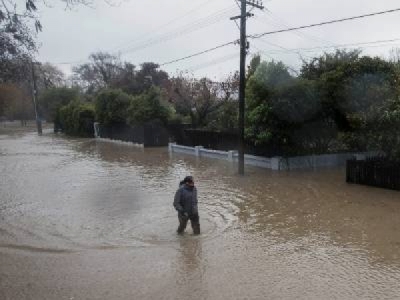
Posted on November 27, 2017
By Tina Law, stuff
Every time it rains Sheena Sherratt and her family look nervously to the sky.
She has lived along the banks of Christchurch’s Heathcote River for 15 years and water has reached above the floor of her home three times since the 2011 earthquakes.
Sherratt and other residents living near the river told the Christchurch City Council on Thursday what it was now like to live there.
The stress on Sherratt and her family has been immense and they have had to clean away dirty nappies and toilet paper from their property following flooding.
When 20 millimetres of rain fell they knew they had to shift the car to higher ground, she said.
“We are trapped unable to sell and unable to escape,” she said with her voice cracking.
Bruce Kane and Shaun Daley presented a petition to the council, signed by 300 residents, encouraging it to take immediate steps to remove silt build-up by starting an effective maintenance and dredging programme.
The petition said residents and businesses had reached crisis point.
Kane said the flooding had taken much of the pleasure of living near the river away.
The council on Thursday agreed to implement a $72 million programme to address flooding issues along the Heathcote.
The river would be dredged to remove 60,000 cubic metres of material from the river bed, at a cost of $14.2m, but the project was dependent obtaining consents and on funding being approved next year as part of the council’s 10-year budget. Staff would also continue work on four new storage basins in the Upper Heathcote at a cost of $41m.
The work could be implemented within three years, depending on funding.
About $28m has already been approved and another $44m would be needed from the council’s Land Drainage Recovery Programme, which would be decided on when the council set its 10-year budget next year.
The council unanimously approved the proposals including its flood intervention policy, which would involve buying up to 35 homes at risk of frequent flooding.The cost of buying the homes was expected to be $16.5m.
The council planned to meet with residents that could be eligible in the next couple of weeks.
Cr Tim Scandrett said the flooding programme was not a nice to have, it was a must do, because communities living along the Heathcote needed confidence and security.
Cr Glenn Livingstone believed the programme should not be paid for by ratepayers alone. He wanted the Government to contribute some funding, since the flooding was earthquake related.
Cr Pauline Cotter said it had taken a long time to get to this stage, but anyone criticising that showed a lack of understanding of the issues.
She said the programme was expensive but was the right thing to do.
Council land drainage manager Keith Davison said the area along the Heathcote had flooded for decades, but became much worse after the 2010 and 2011 earthquakes.
He said the solutions were complex and were put in the “too hard basket” for many years, but it was not going to get easier.
The number of homes at risk of frequent flooding (greater than a one in 10 year event) was now more than three times greater than before the earthquakes (24 compared to seven) and those at risk in an extreme event (one in 50 year) had increased from 175 to 222, the council said. Of these, 101 were not at risk before the earthquakes.
Building low stopbanks was not part of the flooding mitigation options currently planned, but staff want to investigate the technical feasibility of low stopbanks.
Source: stuff





